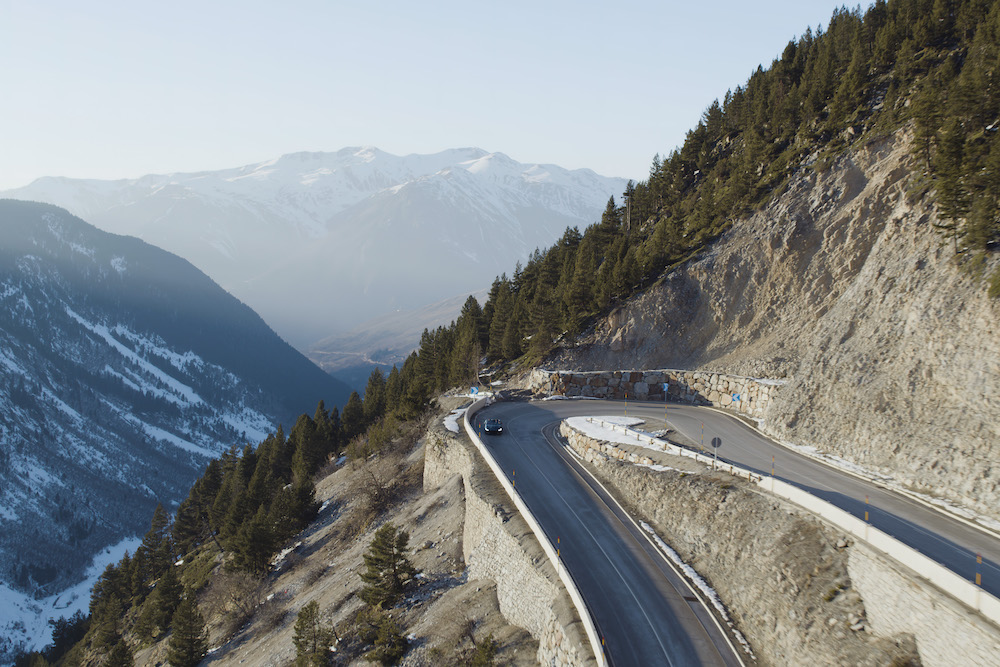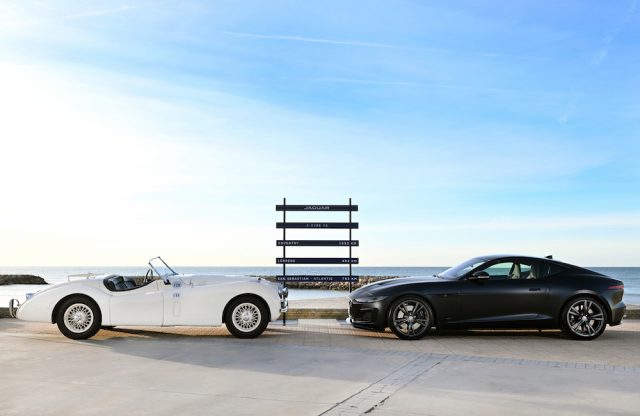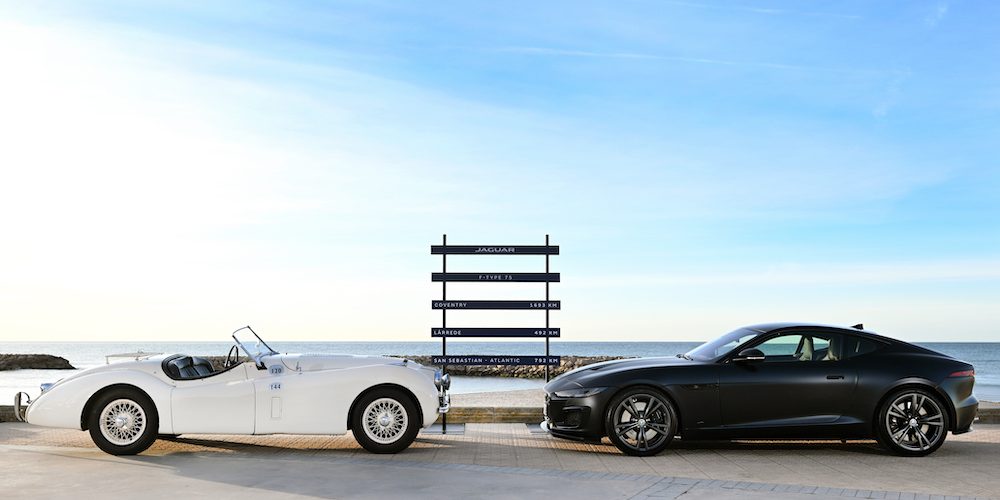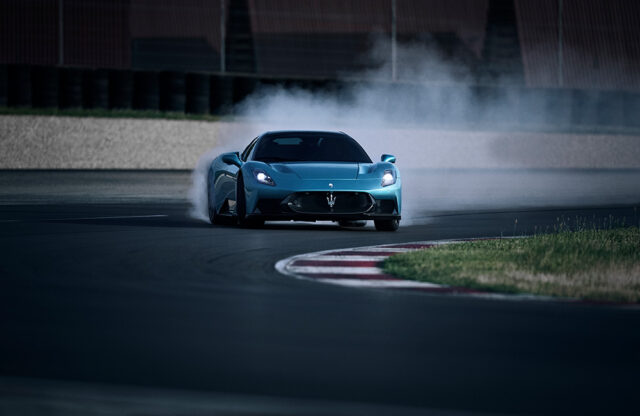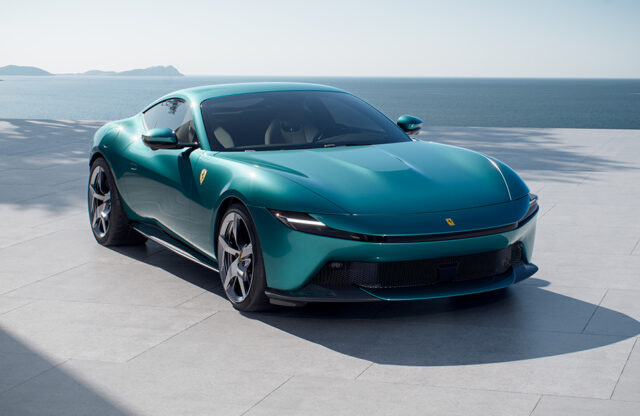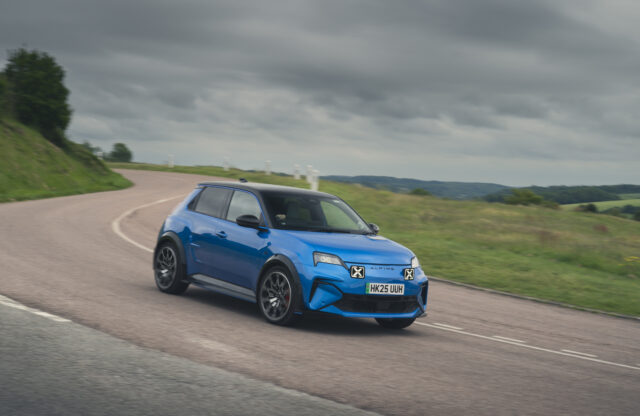WORDS: DAVID LILLYWHITE | PHOTOGRAPHY: JAGUAR
Well this is odd. A full 75 – yes, seventy-five! – years after William Lyons unveiled the six-cylinder XK120 sports car that would come to define his company, here we are in the very last of its breed. The Last-Ever Internal-Combustion-Engined Jaguar Sports Car. Yes, it’s happening, just as we all knew it would really. Here I am, burning fossil fuel as a searing V8 exhaust note bounces off the rock faces of twisting, turning Pyrenees mountain passes, knowing that the future won’t sound nearly so good.
This, then, is the Jaguar F-type 75, a last-gasp special edition of the sports car that finally lived up to the reputation of the E-type. It’s been a reasonable success for Jaguar Land Rover, selling around 10,000 examples a year of Convertible and Coupé over the past decade (around 67,000 E-types were built in total, in case you were wondering). But by 2025, the F type is expected to be replaced by an all-new, all-electric model, bringing a long and mostly iconic line of petrol-powered Jaguar sports cars to an end.
Now that line is ending, however, and it’s time to say goodbye. To do so, we’re driving across Spain, along the line of the Pyrenees from the Mediterranean to the Atlantic, for no reason other than the obvious: great roads, warm weather and spectacular scenery almost the whole way. At the start of the organised drive, Jaguar has parked up NUB 120 and 77 RW – two of the most famous examples of the XK120 and E-type – respectively.
Both sit unobtrusively next to the F-types, delicately styled and so much smaller than the new cars. NUB 120, twice winner of the Alpine Rally and an RAC Rally victor, carries the decals from some of its more recent appearances at Goodwood Festival of Speed runs on its curvy flanks. As the first-production open two-seater E-type, 77 RW was one of the 1961 Geneva show cars, famously driven in haste from the factory across the Alps to the event.
Neither were ever out-and-out sports cars. There was always a touch of the grand tourer to them, at least by the standards of the day – because now an XK’s cramped cockpit, lack of luxuries and distinctly pre-war driving experience feel anything but grand – yet XKs were a cut above typical sports cars of the time and are still wonderfully characterful. It’s a step change going from an XK into an E-type; rather like the progression from a 356 to a 911. An E-type still feels more modern than it has any right to, a car that takes less learning and adaptation than its predecessors.
Even early examples such as 77 RW is an easier drive despite its flat floor that restricts legroom and foot space, and E-type comfort levels certainly improved with age. The 1975-on XJ-S built on the grand tourer vibe, right through to 1996, to be replaced by the XK8 and then the 2005 XK, but really it took until 2012 to get everything completely right, with the F-type.
Unlike the XKs and E-types, the F-type has if anything got sportier over the years, or at least there have been ever-more hardcore options available. Now, it is available only in 2.0-litre P300 form or as a V8 – and the only V8s on sale are these special-edition F-type 75 Coupés and Convertibles. They come in 450PS (444bhp) specification with either rear-wheel or all-wheel drive, or 575PS (567bhp) with all-wheel drive.
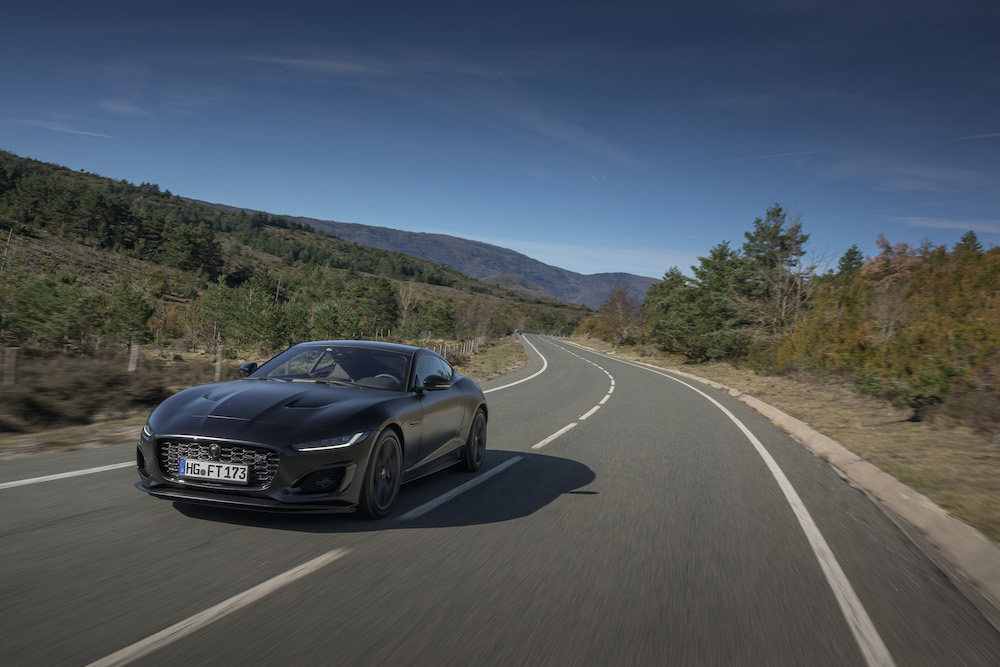
Most of the F-type extras are included as standard on the 75, along with 20in alloy wheels, Black Pack interior with Windsor leather Performance seats and special badging on the front wings, centre console and tread plates. The Convertible you see here is the standard 75 Giola Green, while the Coupé has the £9990 Ligurian Black satin paint option. And while we’re talking money, prices start at £78,330 for a 450PS rear-wheel-drive Coupé and climb to £108,065 for a 575PS all-wheel-drive convertible.
Of course, given the choice, I start in the 575PS version, which in this case is a Coupé (good) in satin black (not quite my taste). It’s been a while since I drove an F-type, but it’s a model that I’ve admired since it was revealed at the 2012 Paris Motor Show in Convertible form. I liked it even more after the Coupé was shown in 2013 at the LA show. Since then there have been two facelifts, in 2013 and 2017, and it remains quite a looker. Whatever you make of the satin paintwork, the 575PS Coupé sits well on those 20in alloys. I’m immediately at the mercy of JLR’s much-updated sat-nav, which still isn’t as good as some but is a vast improvement on the old system.
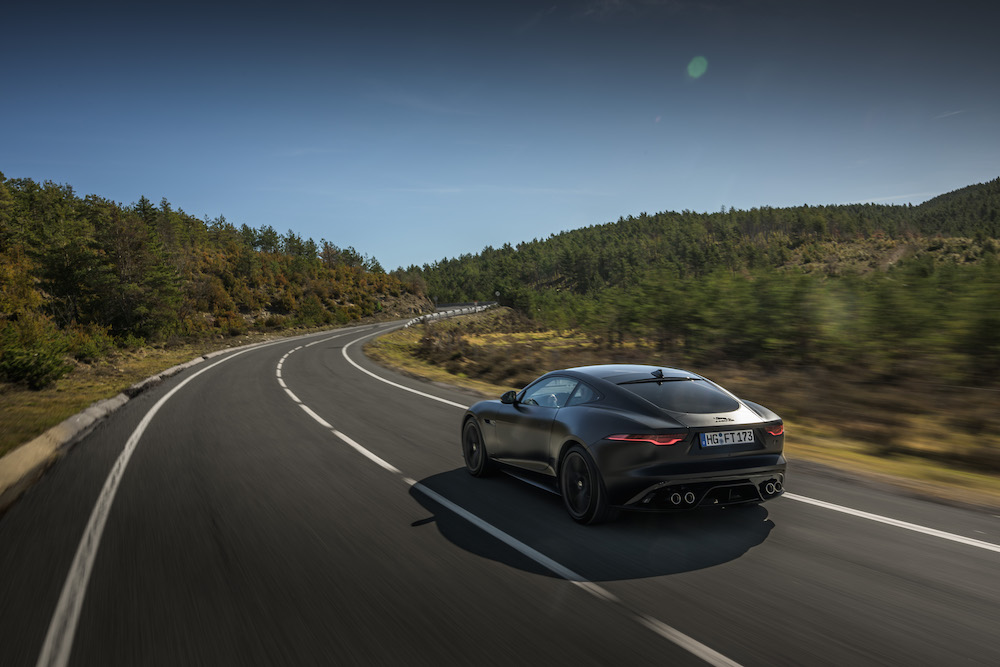
The engine and transmission, though, are sublime. Trickling through the quiet town early in the morning, the Coupé feels easy to manage once the sensitive throttle has been acclimatised to. It’s not long before the roads open up, initially with a bit of motorway and then onto A-roads into the Pyrenees – and there’s never, ever a glitch in the power delivery. The engine is great, but the eight-speed ZF transmission is even better.
Want to cruise along gently? No problem – you’ll barely notice the gearshifts. In the mood to push harder? Then we’re off, with the exhaust howling, especially in Dynamic mode, when the decibels rise (and the suspension stiffens). This is not a subtle car.
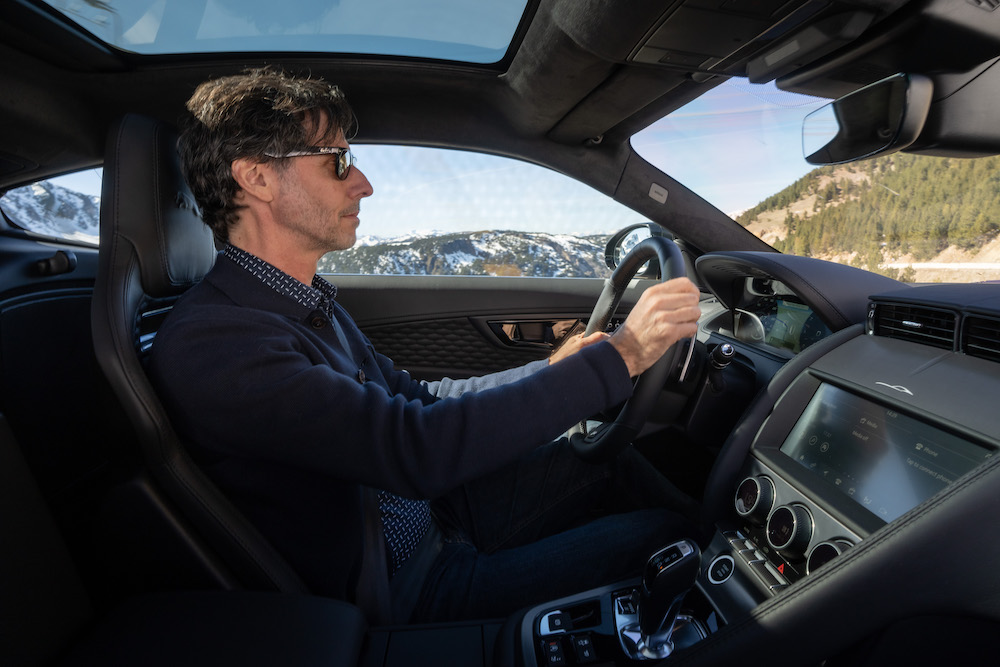
Into the mountains, the roads start to twist and turn, testing the F-type’s sports car abilities. Typically of Spain, most of the surfaces are near perfect, so the ride of course always feel good, but hammering into corners shows up the F-type’s biggest failing – weight. This is a heavy car despite its reasonably compact size, with the Convertible coming in at 1781kg.
When road surfaces do deteriorate, so too does the ride, unsurprisingly. It’s never uncomfortable, but it feels like the F-type is more unsettled than you might expect it to be over the bumpy bits, especially at speed. The harder I push it, the more I’m reminded that actually the F-type is – just like its predecessors – deliberately more GT than pure sports car.
That’s fine, it feels right. But does it need so much power in that case? Time to try the 450PS Convertible, this one in rear-wheel-drive format. Immediately the relative lack of power is apparent, but only because I’ve been so spoilt in the Coupé. The violence of delivery is gone, and it’s clear that this V8 needs more revs to really get a move on. All the same, it speeds from 0-62mph in a mere 4.4 seconds. Hardly slow! The 575PS car is deeply impressive, but the 450PS better suits the F-type’s character – and that feeling is later echoed by one of the Jaguar development engineers, who says his ideal specification is a 450PS rear-wheel-drive F-type.
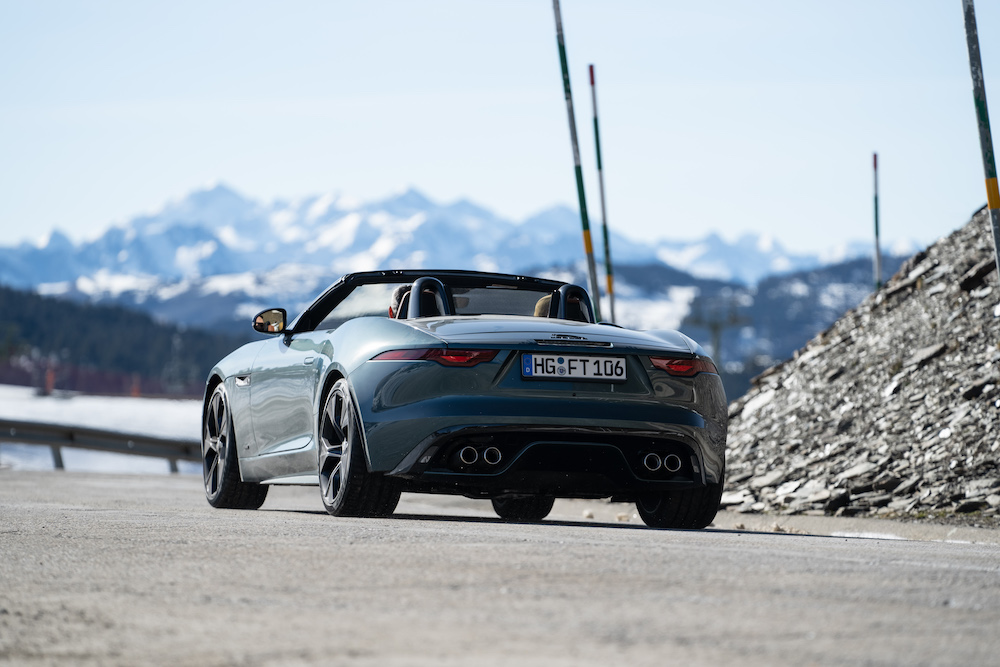
Hood up, this one is quiet and unflustered. Almost uncannily so, as is usually the case with modern soft-tops – and very much not the case with the majority of classics. Hood down, the small deflector between the roll hoops does a remarkable job of keeping the cabin civilised. Give me a Coupé every time… but as open-top cars go, this is pretty damn good.
And, of course, it’s with the hood down that the F-type’s evocative soundtrack really pulls on the heartstrings. I love the smooth, torquey delivery of electric motors, and I’m all for environmental progress, but I can’t imagine anything feeling as good as accelerating hard in a rear-drive sports car with the top down or windows open, and feeling the subtleties of the engine’s torque curve working with a slick transmission as the intake and exhaust combine to make beautiful music.
For that, the F-type must be saluted. It’s a little too heavy, it’s not as slick as a Porsche Cayman or a 911 (how Jaguar execs must sigh at those obvious comparisons), and it’s a lot of money. But it’s entirely worthy of its 75 years of predecessors, and it will be sorely missed when it goes out of production in 2024, as the Last-Ever Internal-Combustion-Engined Jaguar Sports Car. That sentence still shocks me.
